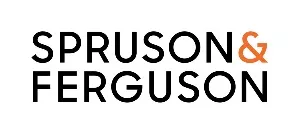This decision of the Federal Court is the culmination of a full-scale attack on Lundbeck's Escitalopram Patent (AU 623144) by Alphapharm and Arrow Pharmaceuticals (Arrow). Although the validity of the patent was upheld, the patent term was slashed by five years after it was held that Lundbeck's application for an extension of term was made outside the required time frame. The patent's adjusted expiry date is June 2009.
This decision potentially jeopardizes the validity of extensions of term and reduces the data exclusivity period under the Therapeutic Goods Administration (TGA) Act for "new pharmaceuticals" such as enantiomers and new formulations that are contained in pharmaceutical compounds previously listed in the Australian Register of Therapeutic Goods (ARTG).
The Patent
The escitalopram patent claimed the pharmaceutical compound escitalopram which is the (+) enantiomer of citalopram. Citalopram is a pharmaceutical compound for the treatment of depression and was the subject of a patent originally filed by Lundbeck in 1977.
Revocation/Infringement
Alphapharm and Arrow sought revocation of the escitalopram patent on the grounds of lack of the following: novelty; inventive step; fair basis; clarity; definition; utility; and manner of manufacture. Lundbeck counter-claimed for infringement against Alphapharm.
It was found that the escitalopram patent was not anticipated by the original citalopram patent on the basis that the citalopram patent did not specifically disclose the (+) enantiomer. Moreover, although the skilled addressee would have understood that citalopram consisted of a (+) enantiomer and a (-) enantiomer and would have been able to identify the S and R enantiomers, it was not possible in the absence of further experimentation to identify which was (+) and which was (-).
The Judge also held that the goal of obtaining the enantiomers would not have been adopted as a matter of routine as is required by the Australian test of obviousness. In other words, there was no significant long-felt need or desire to obtain the enantiomers of citalopram which was already known to be a drug that was very selective in its activity.
The Court also found that as the (+) enantiomer escitalopram is a new compound with unexpected and surprising properties that could not have been predicted from the properties exhibited by citalopram, it satisfied the manner of manufacture requirement.
In their counter-claim, Lundbeck alleged that Alphapharm manufactured goods containing the (+) enantiomer escitalopram for the purpose of obtaining regulatory approval in Australia. The Court found that Alphapharm had exploited the (+) enantiomer escitalopram and had therefore infringed the escitalopram patent.
Extension of term
The escitalopram patent was originally the subject of a five-year extension of term. Alphapharm and Arrow sought to have this extension removed.
The extension of term proceedings concerned the competition between two arguable "first regulatory approval dates" namely December 1997 for citalopram and September 2003 for the (+) enantiomer escitalopram, and whether the (+) enantiomer escitalopram was contained in citalopram.
Alphapharm and Arrow contended that as the (+) enantiomer escitalopram was contained in citalopram, the first listing of (+) enantiomer escitalopram in the ARTG was December 1997, that is the date of inclusion of citalopram in the ARTG. Accordingly, it was submitted that the application for the extension of term submitted on 22 December 2003 in relation to the (+) enantiomer was made outside the time period allowed therefore 6 months from inclusion of the pharmaceutical substance in the ARTG.
Lundbeck put forward a number of counter-arguments based on the differences between the (+) enantiomer escitalopram and citalopram, including that the (+) enantiomer was approved as a new chemical entity by the TGA and that it required additional pre-clinical and clinical studies. However, although the Judge accepted that (+) enantiomer escitalopram was a new chemical entity as against the racemate, this did not answer or influence the statutory question as to whether the racemic mixture contains the (+) enantiomer escitalopram.
The Judge held that citalopram and the (+) enantiomer escitalopram are for the same kind of therapeutic use and that the therapeutic benefit of citalopram comes from the presence in it of the (+) enantiomer escitalopram. Consequently, the Court found that it would not be right to say that citalopram does not contain the (+) enantiomer escitalopram merely because the therapeutic effect of the racemate is less effective because of the additional presence in it of the (-) citalopram.
Accordingly, the Judge found that citalopram contained the (+) enantiomer and, as such, Lundbeck's application for an extension of term was made outside the time period allowed. Accordingly, it was held that the register should be rectified to remove reference to an extension of term for the escitalopram patent.
Data exclusivity
Under the TGA Act, data submitted in an application for listing in the ARTG is protected for a period of five years from the date the pharmaceutical is first listed; this period is known as the data exclusivity period.
The corollary of the finding that the first listing of the (+) enantiomer escitalopram in the ARTG was December 1997 is that the data exclusivity period for the (+) enantiomer was held to expire in December 2002 rather September 2008.
Lundbeck issued a statement saying it would appeal the decision to remove the extension of term.
The content of this article is intended to provide a general guide to the subject matter. Specialist advice should be sought about your specific circumstances.

